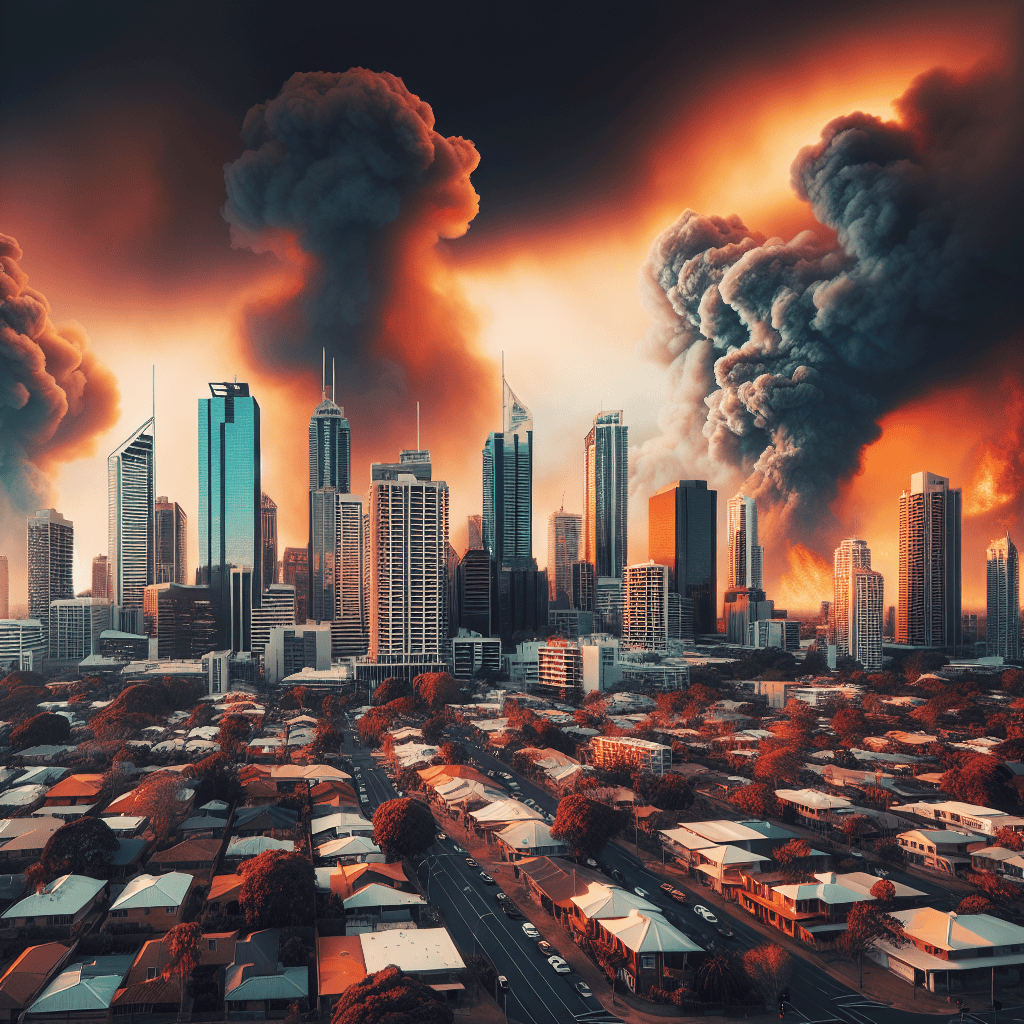Australia has long been synonymous with its breathtaking landscapes and unique biodiversity; however, it also holds the regrettable distinction of being one of the most bushfire-prone regions in the world. Historically, bushfires have ravaged Australia’s rural regions, but in recent years, urban areas have found themselves increasingly under threat. With climate change exacerbating the frequency and intensity of these infernos, the need for cities to adapt and prepare has never been more urgent.
Why are Urban Bushfires Becoming a Greater Concern?
Several factors contribute to the rising threat of urban bushfires:
- Increasing urban sprawl: Urban centers are expanding into bushland areas, creating a dangerous mix of vegetation and infrastructure.
- Climate change: Rising temperatures, reduced rainfall, and more frequent heatwaves have created an environment that fuels bushfire activity.
- Population densification: More people are living in vulnerable areas, making evacuation and firefighting efforts more challenging.
Addressing this escalating risk requires urgent, proactive strategies that integrate cutting-edge technology, urban planning, and community engagement.
The Impact of Urban Bushfires
Bushfires moving into urban areas bring devastation on an unprecedented scale. When bushfires invade cities, they don’t just destroy vegetation; they obliterate homes, businesses, and critical infrastructure, leaving behind a trail of destruction. Some critical consequences include:
- Human fatalities: Urban bushfires cause significant loss of life due to their unpredictability and speed.
- Economic damage: Fires in urban settings result in billions of dollars in property damage, strain on public services, and long-term financial burdens.
- Environmental havoc: Cities become emblems of ecological destruction when fires decimate urban greenery and pollute air and water resources.
Recovering from such disasters can take years, underscoring the importance of preparedness in minimizing damage.
What Must Australia’s Cities Do to Prepare for Urban Bushfires?
Despite the towering challenge posed by urban bushfires, there are actionable measures that cities can implement. The solutions break into several categories: strategic urban planning, technological leverage, and grassroots engagement.
1. Integrating Fire-Resistant Urban Development
Designing cities to be more resilient to bushfires begins with how they are physically constructed. Urban planners and developers must work together to rethink city layouts to minimize fire impact. Key strategies include:
- Defensible spaces: Implementing firebreaks and creating clear buffer zones between bushland and residential areas to curb the spread of flames.
- Fire-resistant building materials: Mandating the use of non-flammable construction materials like metal roofing, concrete, and brick.
- Improved landscaping: Planting low-flammable vegetation and maintaining regular pruning to reduce fuel loads in vulnerable urban zones.
Urban planning should also incorporate zoning laws that discourage high-density developments in bushfire-prone regions.
2. Leveraging Advanced Technology
Technological innovations have a critical role in combating urban bushfires. Early detection systems combined with real-time information sharing can significantly reduce the response time and improve disaster management. Important technologies include:
- Artificial intelligence and satellite monitoring: AI-powered tools and satellite imagery can help track fire movement and anticipate high-risk areas.
- Smart warning systems: Automated notifications can immediately send evacuation alerts to residents in harm’s way.
- Fire suppression drones and robots: Employing robotics to safely tackle fires in environments that would be too dangerous for human firefighters.
Investing in government infrastructure to implement these innovations is vital for keeping urban populations safe.
3. Empowering Local Communities
While structural improvements and technological solutions are crucial, no effort to mitigate urban bushfires can succeed without active engagement from the community. Public knowledge and collective readiness make a significant difference during emergencies. Cities must focus on:
- Educational programs: Teaching residents how to mitigate fire risks at home, such as maintaining clear gutters and removing flammable debris from yards.
- Evacuation drills: Conducting regular fire drills to ensure communities know safe exit routes during an emergency.
- Community firefighting groups: Encouraging local participation in auxiliary firefighting efforts to supplement official agencies during high-impact events.
Preparedness at the grassroots level can enhance survival rates and reduce the chaos that often accompanies bushfire evacuations.
Government Policy: A Crucial Backbone
Government actions must provide the foundation for tackling urban bushfires effectively. Public policies should emphasize fire preparation, disaster response, and long-term recovery. Proposed measures include:
- Mandatory risk assessments: Legislating hazard assessments for urban developments in vulnerable regions.
- Financial incentives for resilience: Providing grants or tax breaks to encourage homeowners to adopt fire-resistant measures.
- Investment in emergency services: Allocating funds to train and equip firefighters with the latest technology and tools designed for urban environments.
Creating a cohesive strategy that aligns federal, state, and local disaster management policies is crucial to ensuring coordinated and effective responses when urban bushfires strike.
The Role of Every Australian
Preparing for urban bushfires is not the sole responsibility of governments or organizations. Every Australian living near high-risk areas plays a role in fire prevention and readiness. Simple yet effective steps to contribute include:
- Staying informed about bushfire warnings and seasonal risk forecasts.
- Creating a personal bushfire evacuation plan for families and pets.
- Securing adequate insurance coverage to assist with post-disaster recovery.
Collective vigilance not only minimizes personal risk but also helps neighbors and communities stay safe.
Looking Ahead: Living with Resilience
Urban bushfires are no longer an abstract threat for Australia’s cities—they are a harsh reality. As climate patterns shift and bushfire intensity increases, urban centers must take bold steps to protect their residents and infrastructure. By combining smart urban planning, cutting-edge technology, public participation, and robust government policies, we can forge a path toward resilience.
In the end, it is clear that the fight against urban bushfires requires effort from all sectors of society. While prevention is the ultimate goal, preparation and education will remain our strongest assets in minimizing the devastating effects of these natural disasters. Together, Australia’s cities can emerge stronger and better equipped to face the challenges of a warming world.
“`


